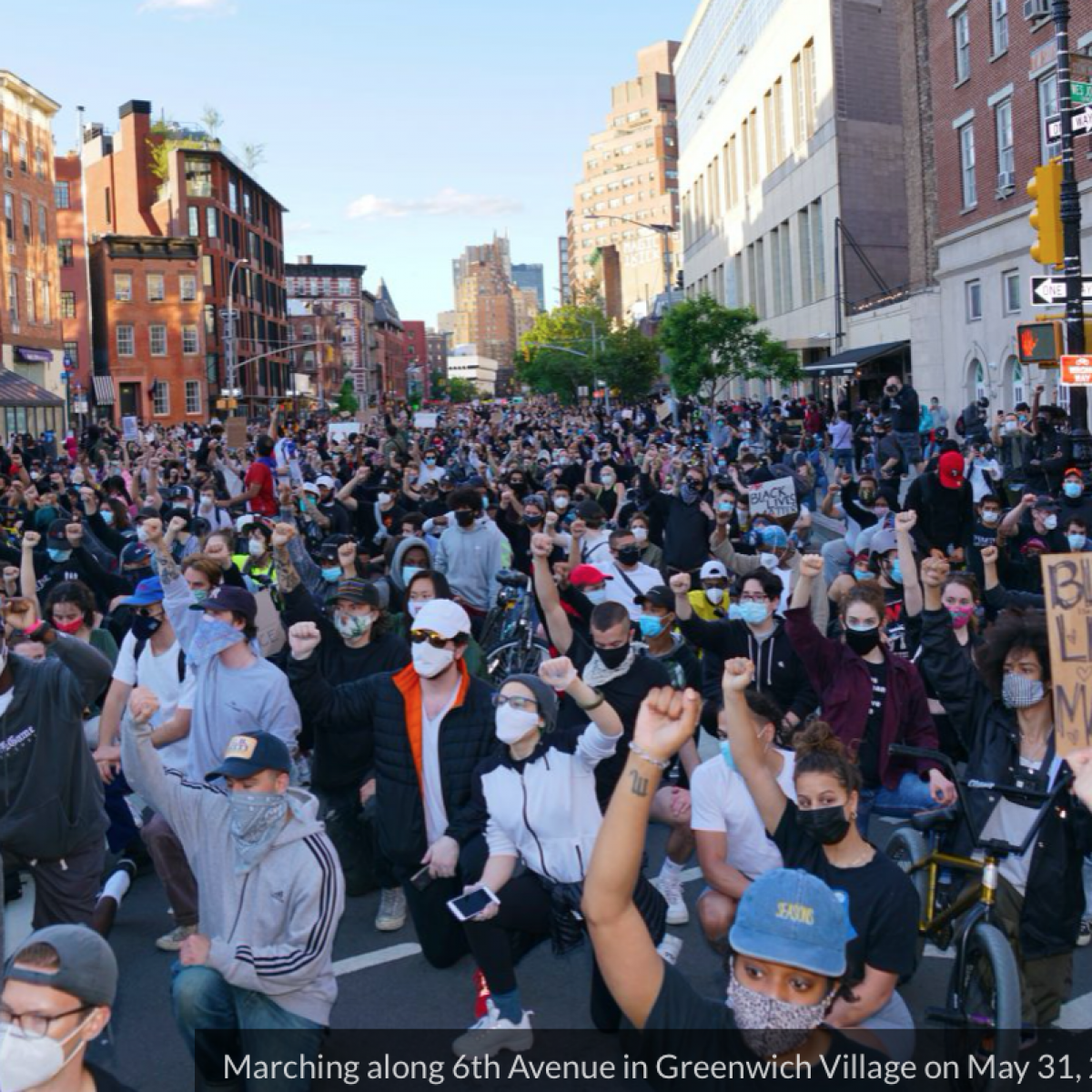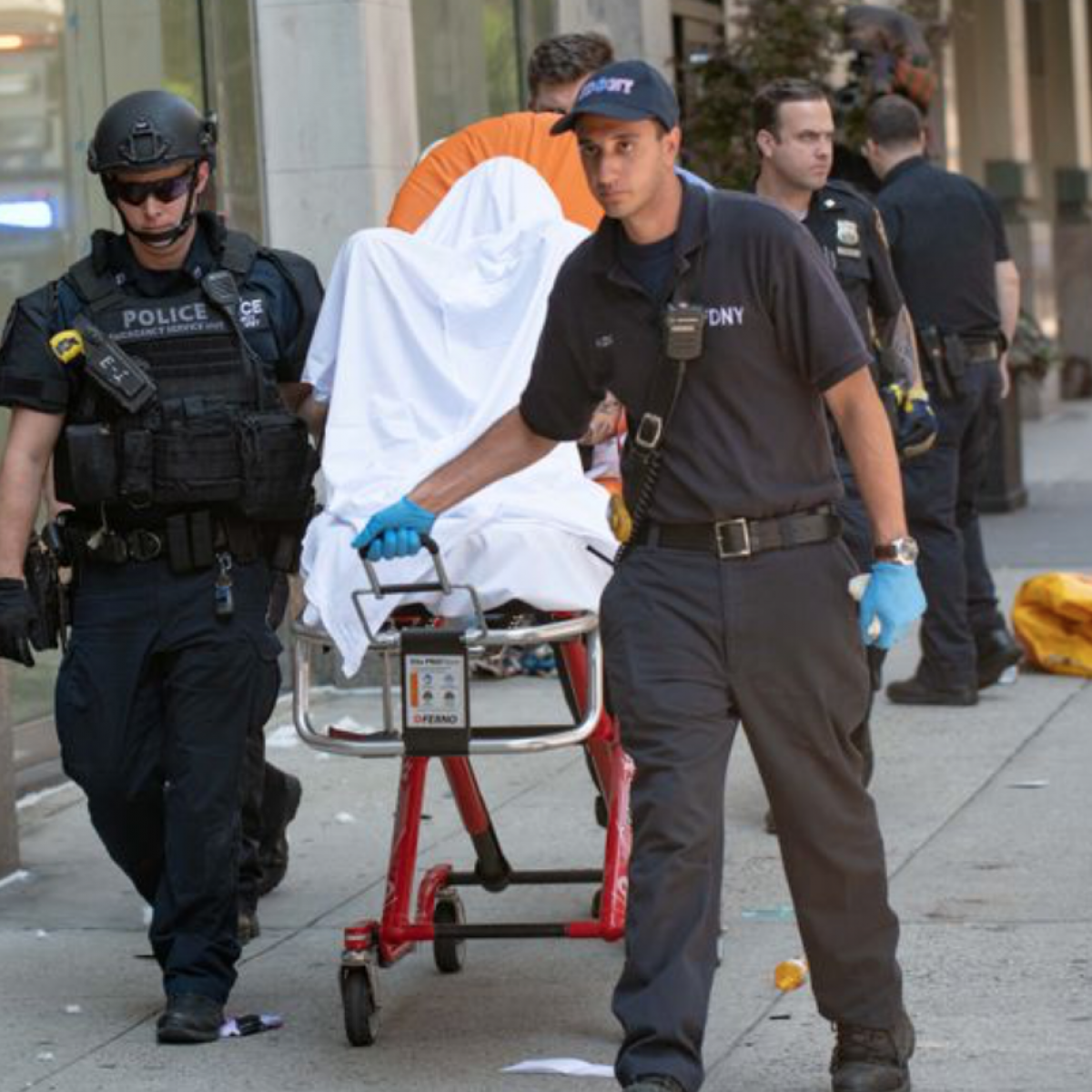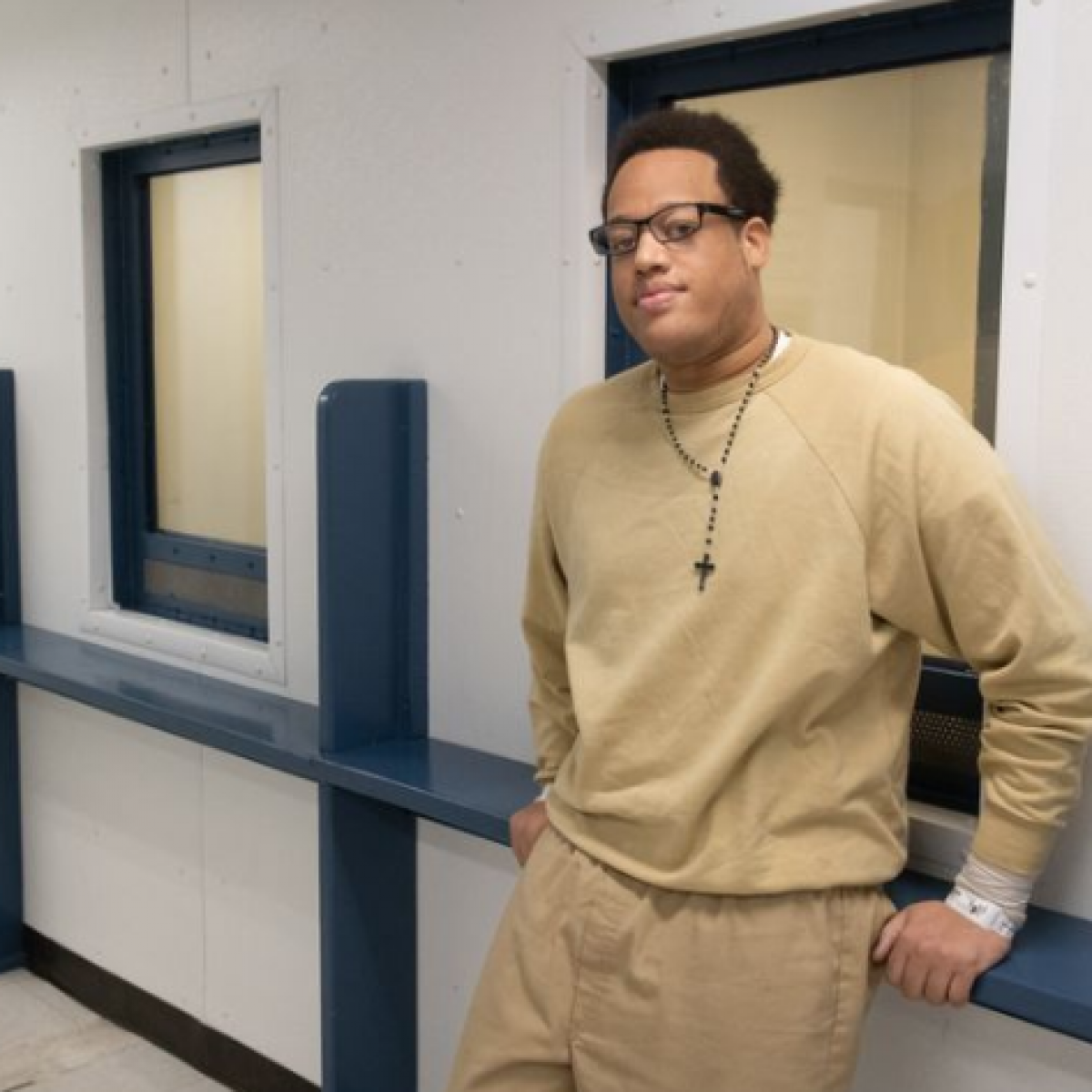The Crime Report ran a story entitled “Cops and the Mentally Ill: Finding A New Approach.” The story focused on the importance of Crisis Intervention Training (CIT) and promising new Alternatives to Incarceration for people with serious mental illness. Hope House was featured prominently and we wanted to be sure you didn’t miss the story.
The story, written by Isidoro Rodriguez, follows:
On December 19, 2013, a man stood on the ledge of a bridge in Spokane, Wash., threatening to jump. Responding officers knew that if they tried to grab him, he would step off the ledge and fall into the river below.
Instead, they spent almost 90 minutes listening and talking to him, in the hopes of calming him down. Their efforts at empathy worked. The man eventually allowed himself to be taken into custody. He was placed in an ambulance, and driven to a nearby hospital. The officer who talked him down rode to the hospital with him.
That story was retold by Frank Straub, currently Director of Strategic Studies for the Police Foundation, who was the police chief in Spokane when the incident occurred.
As he described it in a recent interview with TCR, responding officers lowered tension by turning off sirens and flashing lights that might have antagonized a person in acute distress. They approached the man slowly, instead of running to him, and kept a distance so that he didn’t feel threatened or crowded.
“It demonstrated that we were truly there to help this person, to help his family, to get him connected to services,” said Straub.
The patient, empathetic approach allowed the officers to obtain the man’s name, and gave them time to contact his mental health provider who, once involved in the conversation, was able to give cues on what and what not to say.
In hindsight, the steps Spokane officers used to talk the man off the ledge seem obvious. But many police departments around the country have only gradually begun to grapple with a problem that has challenged law enforcement, as well as courts and prisons, for decades: dealing with the justice-involved mentally ill.
According to a 2015 assessment by the National Institute of Mental Health, 18.5% of the U.S. population suffers from a mental illness in a given year. Of that number, 4% of the country’s population—roughly 9.8 million people—suffer from a serious mental illness, most commonly schizophrenia and treatment-resistant forms of bipolar disorder.
Of that 4%, more than two million go untreated. This last group is where most problems occur.
But any way you look at it, the relationship between the seriously mentally ill and law enforcement is a difficult one.
“When people ask, ‘Are the mentally ill more violent?’ they are usually asking about this group, the most seriously mentally ill,” said DJ Jaffe, founder of MentalIllnessPolicy.org, a think tank providing information about the care and treatment of people with serious mental illness.
Prone to criminality, as well as violence against themselves and others, the untreated mentally ill have been responsible for the deaths of 115 law enforcement officers since 2009, says Jaffe.
Adversely, of the 608 people killed by police this year, mental illness played a role in 144 of those deaths, as recorded by the Washington Post’s “Fatal Force” database.
Avoiding Violence
However, in the last five years, departments across the country have begun to address the contentious nature of this relationship with new and extensive training methods that teach officers how to deal with individuals in mental health crisis and, hopefully, avoid violence.
“There has been a greater appreciation for the need for officers to be well versed in how to deal with people in crisis,” said Straub.
Crisis Intervention Training (CIT) emphasizes de-escalation, communication and empathy. It’s been successfully implemented in cities such as Seattle, Tucson, and New York.
According to a 2016 report by the National Alliance on Mental Illness, CIT has been adopted by more than 35 states, with statewide initiatives in effect in Ohio, Georgia, Florida, Utah, and Kentucky.
Teaming with representatives from the mental health community, as well as experienced members of law enforcement, officers in the programs are trained to recognize the signs of a variety of mental illnesses and respond accordingly.
Where once law enforcement may have taken a confrontational approach to any tense interaction with the seriously mentally ill, today the officers learn to identify an observable pattern of mentally ill behavior and, in response, calm things down.
For Straub, the success of this training is exemplified by his own experience as chief of police in Spokane, where, after requiring that all 300 of his officers attend 40 hours of CIT, use-of-force incidents were reduced by 22% in 2014.
Susan Rahr, Executive Director of the Washington State Criminal Justice Training Commission and a former sheriff of Kings County in Washington State, is hoping to get similar results with a statewide law enforcement training program.
“What we’re trying to reinforce is [the need to] do everything else possible before you resort to deadly force,” said Rahr in a recent interview with TCR.
Like Straub, Rahr insists that officers must constantly attempt to position themselves so that they have the opportunity to calm a suspect down and de-escalate the situation.
At the Kings County Police Academy, she points out, 90% of that de-escalation practice is rooted in proper patrol tactics: not rushing into a situation and exposing yourself to a suspect’s gun or knife; maintaining distance between yourself and the suspect; and creating the time needed to assess the best course of action.
While Straub and Rahr agree that practical CIT practices represent some of the largest positive changes to law enforcement’s handling of the mentally in nearly 30 years, both admit that these methods alone are not enough to solve the problem that the seriously mentally ill represent.
The Larger Problem
Rahr argues that all elements of the justice system must work together to deal with persons in psychological crisis, from the moment they are pacified and taken into custody to treating their needs through courts and counseling.
“If there’s no place to take them except jail, we really haven’t gotten much better,” she said.
Most of the players in the criminal justice community agree.
The unavailability of hospital beds, the lack of treatment alternatives, and misallocation of federal funding are among the factors that ensure the seriously mentally ill wind up back on the street without access to the medications and treatments they need to stay out of harm’s way, according to mental health advocates.
“The big picture, over the last forty years, has to do with deinstitutionalization,” said Cheryl Roberts, Executive Director of the Greenburger Center for Social and Criminal Justice, a nonprofit organization advocating for justice reform, in an interview with TCR.
A byproduct of the Social Security Act of 1965, de-institutionalization was brought about by a provision called the “IMD exclusion,” which prohibits federal Medicaid payments for treatment in “Institutions of Mental Disease” larger than 16 beds.
Thus, states were incentivized to move patients out of state mental hospitals and into communities with no prior planning or resources to meet their needs. As a result, homelessness increased and, soon after, criminality ensued that was promptly followed by incarceration.
Today, such policies have led to the fact that the largest mental health facilities in the nation are, effectively, jails.
“We’ve really, over the last 40 years, had this trans-institutionalization from mental institutions, and other situations, into jails or prisons,” says Roberts, who stresses that most mentally ill offenders return from incarceration in worse condition than when they entered.
Even if a person is lucky enough to receive some medical attention and behavioral health care while incarcerated and, in some cases, even be stabilized, Roberts points out that when they come out there are often no adequate services available for them.
It is the police who bear the brunt of the failure to develop a nationwide system of dealing with the serious mentally ill.
Members of both the mental health and criminal justice communities agree that incarceration of the mentally ill is not a solution and only “wastes taxpayer’s money.”
And it is the police who bear the brunt of the failure to develop a nationwide system of dealing with the serious mentally ill—and who are most often blamed when encounters go tragically wrong.
“The institution of policing is not designed for mental health treatment,” said Rahr.
“We inherit the failures of all the other systems and then when things don’t go well, the frontline officers become the target of people’s blame and anger.”
In response to these issues, there have been initiatives such as Stepping Up, which asks communities to come together to develop an action plan for achieving measurable impact in criminal justice systems across the country; and efforts by Pew Charitable Trusts, to help states develop alternatives to prison or jail for the mentally ill.
Steering the Mentally Ill Into Treatment
Called “diversion work,” the goal is to ensure that community health providers have the capacity to handle folks who are mentally ill and provide them with regimented treatment.
“Having this population go in, get more ill, and come back out is not serving anyone’s interests,” said Roberts.
It is this understanding of a general need for diversion alternatives to prison that lead her and the Greenburger Center to develop “Hope House on Crotona Park,” a first-of-its kind diversion option for people with serious mental illness who have been accused of felony level crimes.
Located on two adjacent properties in the New York borough of The Bronx, the model would be a pretrial diversion in which a mentally ill defendant, who is competent and obtains the approval of both the judge and district attorney, would be diverted ahead of trial to Hope House via a plea agreement for up to two years of treatment.
According to Roberts, judges and DA’s have been hesitant to divert this population of the mentally ill. They explain that if these individuals were to go to community facilities and decide to leave, the only way to get them back to court would be to arrest them.
This involves going to court, getting a bench warrant, and it taking several days/weeks/months to re-arrest that person.
Therefore, to streamline the process and guarantee security, the Greenburger Center will ask the court to place a bond on this person and hire bond agents to be trained and to be on site 24 hours a day.
However, the issue of bonded release is a red flag for those who consider any form of restriction on a person’s liberty due to inability to pay to be unconstitutional.
According to Cherise Fanno Burdeen, chief executive officer at the Pretrial Justice Institute, which advocates for an end to the cash bail system in this country, the Greenburger Center’s model may be merely shifting the insurance industry’s profit center to what she calls “treatment bonds,” thereby creating a system where a mentally ill person will have access to treatment only if they can afford bail; otherwise they stay in jail.
“People with mental illness take about five times longer to post money bail,” said Burdeen, in an interview with TCR.
“They are often estranged from their families or living on the street and they then end up spending more time in jail due to this money bond issue.”
Yet Roberts insists that, as the Greenburger Center moves forward with its model, they will avoid this issue entirely by advocating for lower money bonds. Judges would be asked to set bonds at $100 or less, and, if necessary, allowing individuals to pay the bond out of pocket or through expected donations.
Set to launch in 2018, Hope House seems to be a perfect model of progressive diversion tactics.It has received support from judges as well as the New York State District Attorneys Association.
Unfortunately, as with any potential reform in the treatment and care of the seriously mentally ill, it all comes down to funding.
“When there’s a gap in services, it’s because of a gap in funding,” said Roberts.
Such innovations have received law enforcement support.
According to Michael Biasotti, a former chief of the New Windsor (NY) Police Department and head of the New York State Chiefs of Police Committee on Untreated Serious Mental Illness, the funding for treatment centers is there.
However, incremental funds rarely make it to the seriously mentally ill, while cutbacks always do.
“There’s tons of funding if it’s used properly,” said Biasotti. “It’s about prioritizing the spending.”
As Biasotti points out, in the medical and law enforcement communities, situations are handled on a triage basis: you deal with most serious problem first. He insists that in the mental health community it is the opposite: Instead of dealing with the most serious issue first, millions of dollars are spent on treating people who are not seriously mentally ill.
In a 2016 article by Psychiatric Times, this sort of misallocation of funds has been connected to the established position of the Substance Abuse and Mental Health Services Administration (SAMHSA), a federal agency with a budget of roughly $3.6 billion, that has been criticized as spending too much time and money on psychological programs that have little to no effect on the seriously mentally ill.
Thus, while people dealing with bullying, trauma, divorce, or depression have access to mental health plans, the seriously mentally ill are left with next to nothing.
“SAMHSA’s goal has been to increase everyone’s mental health, which is great, but first you need to deal with the ones that are truly suffering and really need the help,” said Biasotti.
Some progress has been made.
In 2016, as part of the 21st Century Cures Act, Senator John Cornyn (R-TX) added a provision that allows Department of Justice funds to be used for assisted outpatient treatment (AOT), under which courts can order somebody with a history of being arrested, violent, incarcerated, homeless, and hospitalized due to untreated mental illness to stay in treatment for at least six months while they continue to live in the community, according to an article by the National Review.
Moving From Response to Prevention
For Biasotti, AOT is the best possible solution. He argues that, while practices such as CIT, and pretrial diversion models such as the Greenburger Center and Hope House, are merely responsive, AOT is preventative.
As a result, according to a report by MentalIllnesspolicy.org, AOT has been shown to reduce violence, arrest, hospitalization, and incarceration of persons suffering from mental illness by 70%, thereby saving taxpayers 50% of the cost of care.
“AOT addresses the problem upstream,” said Biasotti. “It keeps the police from ever coming to your door.”
Endorsed by both the International Association for Chiefs of Police and the National Sheriff’s Association, AOT is considered to be a source of relief for law enforcement officers who, as a whole, agree that the criminal justice system is no place for the mentally ill, and are constantly frustrated by seeing the mentally ill that they bring to hospital psych centers for evaluation back on the street—sometimes hours later as a result of inefficient mental health practices and policies.
While changes to the mental health systems treatment and handling of the seriously mentally ill have occurred in fits and starts, they are, nonetheless, occurring.
Most recently, the Trump administration’s 2017 pick for the new head of SAMHSA, Dr. Elinore McCance-Katz, has attracted significant bipartisan approval.
Her first act? Shifting funds towards a more aggressive treatment of patients with severe psychiatric disorders.
However, the mental health system still has a long way to go in shifting both funds and attention to the small population of the mentally ill that, due to serious mental illness, either cause or experience violence in cities and towns across the country.
“There are officers that are killed by mentally ill people and mentally ill people killed by officers,” said Biasotti.
“The goal is to keep the two from meeting, by keeping the mentally ill person in some treatment protocol that doesn’t bring them to the attention of law enforcement.”
Isidoro Rodriguez is a contributing writer to The Crime Report. He welcomes readers’ comments.































